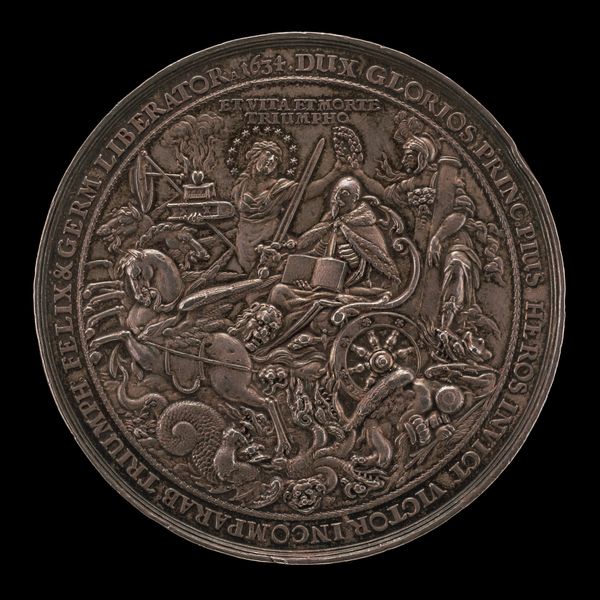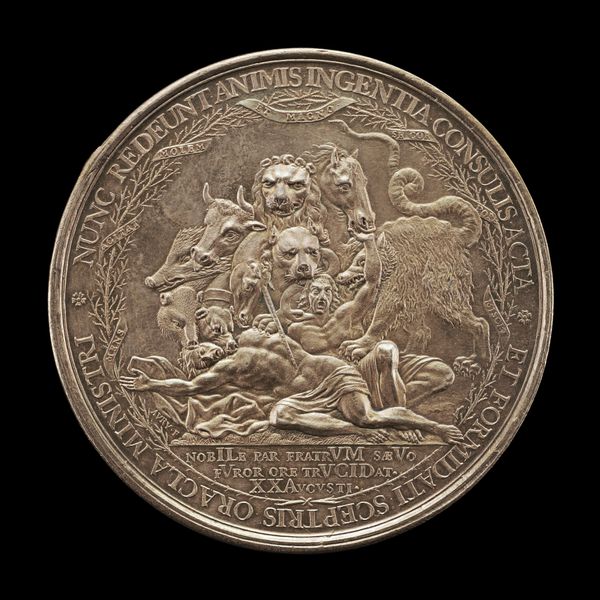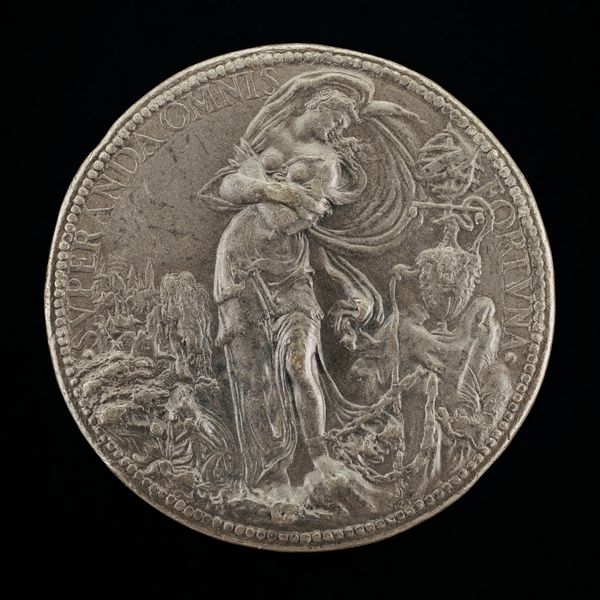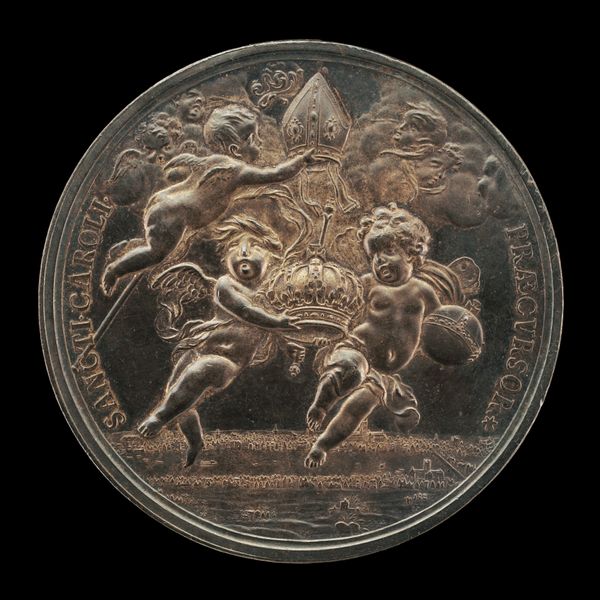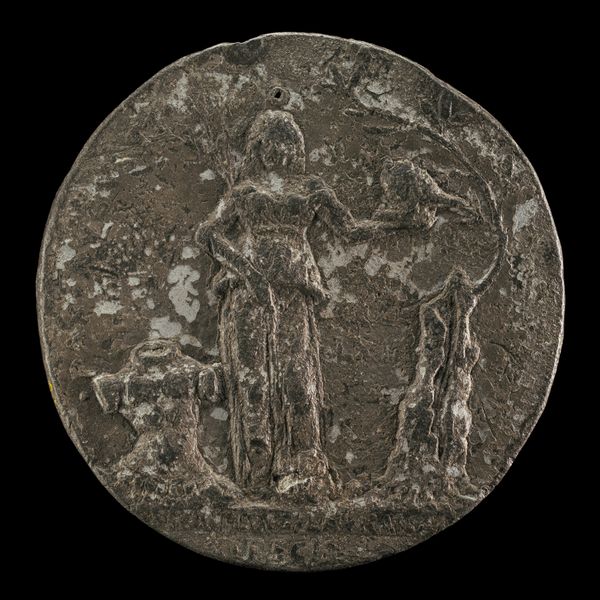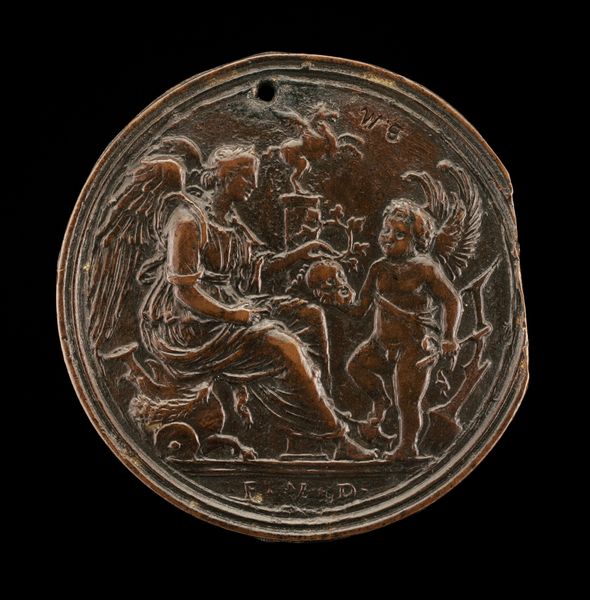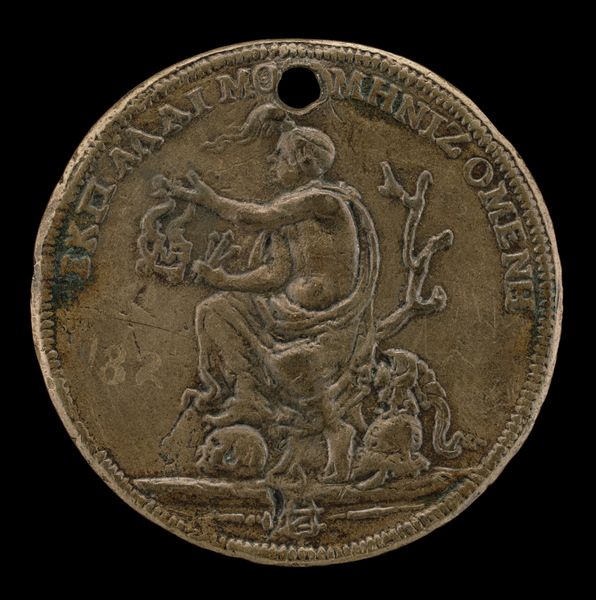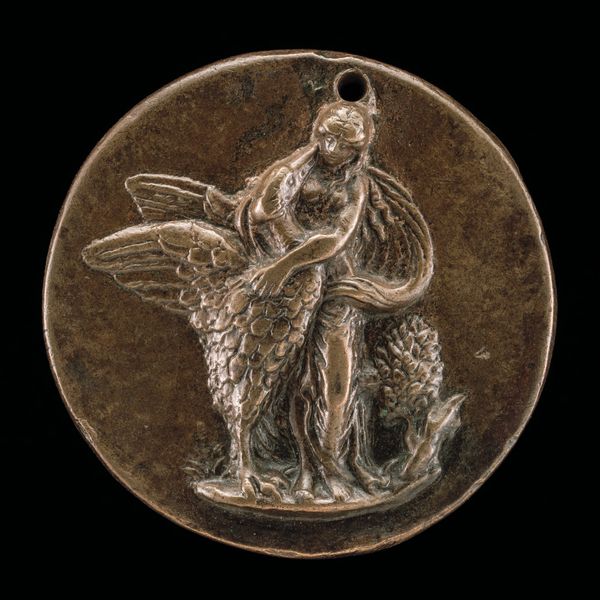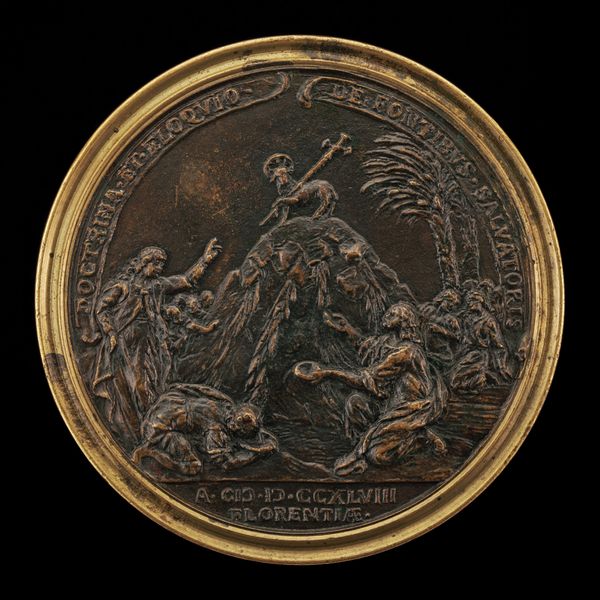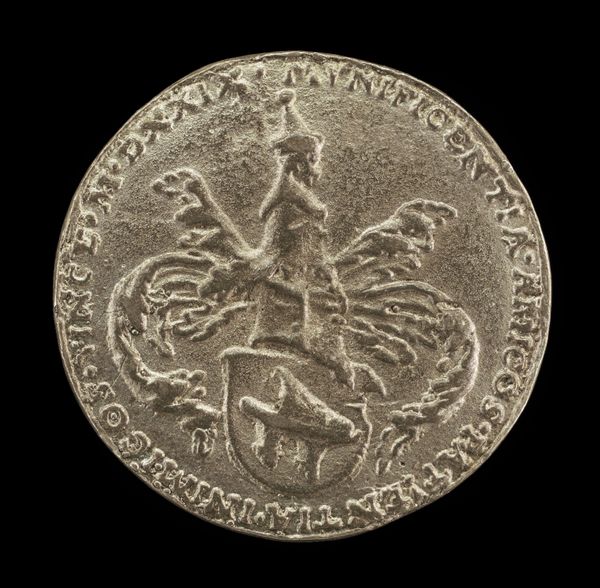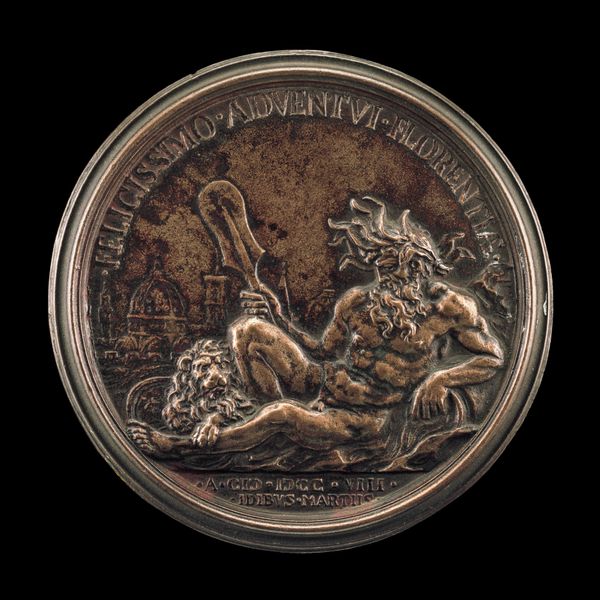![Angel with the Instruments of the Passion [reverse] by Sebastian Dadler](/_next/image?url=https%3A%2F%2Fd2w8kbdekdi1gv.cloudfront.net%2FeyJidWNrZXQiOiAiYXJ0ZXJhLWltYWdlcy1idWNrZXQiLCAia2V5IjogImFydHdvcmtzL2RkMmQ2ODM4LWEyMzYtNDlmOS1hZDZhLTZkMzZjNzQxNzJmYy9kZDJkNjgzOC1hMjM2LTQ5ZjktYWQ2YS02ZDM2Yzc0MTcyZmNfZnVsbC5qcGciLCAiZWRpdHMiOiB7InJlc2l6ZSI6IHsid2lkdGgiOiAxOTIwLCAiaGVpZ2h0IjogMTkyMCwgImZpdCI6ICJpbnNpZGUifX19&w=3840&q=75)
metal, relief, sculpture
#
baroque
#
metal
#
stone
#
sculpture
#
relief
#
figuration
#
sculpting
#
sculpture
#
miniature
#
statue
Dimensions: overall (diameter): 4.3 cm (1 11/16 in.)
Copyright: National Gallery of Art: CC0 1.0
Curator: This relief sculpture, "Angel with the Instruments of the Passion" by Sebastian Dadler, dated 1631, presents an interesting example of Baroque religious art in miniature form. The craftsmanship involved is amazing. What strikes you initially about this piece? Editor: Well, the detail is astonishing, especially given the small scale. The angel seems both powerful and burdened. What kind of cultural narrative was Dadler trying to tap into with this image? Curator: Given the historical context of the Thirty Years' War and the Counter-Reformation, this image speaks to a period rife with religious and political turmoil. This piece serves as propaganda of the Catholic Church during that period. Angels, like the one presented here, offered solace, mediation and intervention in the face of great upheaval and the imagery creates a statement of power when worn on the body as a type of wearable talisman. It is interesting to note that during this period in Europe many felt their suffering had been overlooked, creating tension. This piece and others are attempting to show acknowledgement of pain with this image of compassion. What is your take on the objects surrounding the Angel? Editor: I see the crown and maybe a rooster…they look like symbols of power and sacrifice? Are there social issues to unpack, specifically relating to privilege? Curator: Absolutely. These ‘instruments of passion’ would have been easily understood as referring to the narrative of Christian persecution of their own prophets. Dadler uses well known objects to draw specific reactions in his audience. We can see connections to the political turmoil, and perhaps even a subtle acknowledgement of past struggles as tools to control the future. The image also presents as very feminine due to the curves and youth of the angel in its miniature version here, however other similar angel pieces in larger forms typically are more traditionally masculine. I am curious about how you feel this influences how we read into this piece in its current form. Editor: I hadn't thought about the miniature form creating a sense of femininity...that opens up a new way to consider religious icons during times of political turmoil. Curator: Exactly! Placing it in the context of gender theory, do we see a reclaiming of suffering through feminine representation and a softness? The intersection of history, religion, and identity provides a fascinating framework for understanding this artwork. Editor: I am grateful to view the piece in an alternative context. Thank you for making this piece become so very poignant for me.
Comments
No comments
Be the first to comment and join the conversation on the ultimate creative platform.
